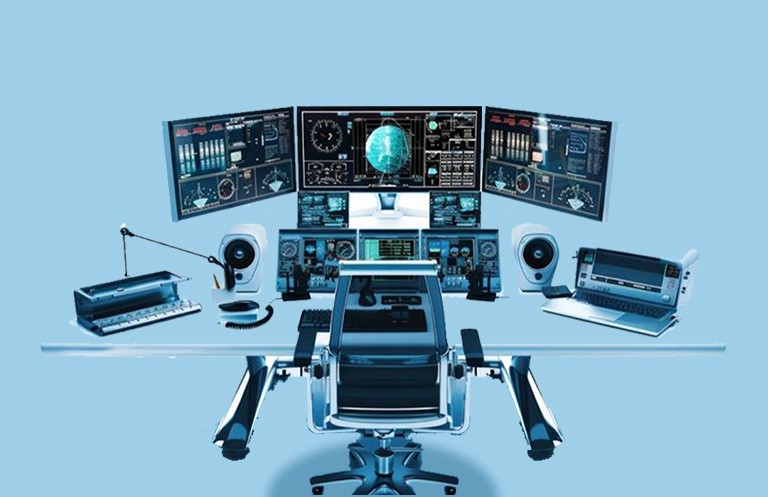Recent advancements in hardware and software engineering have brought in greater levels of control, monitoring and communication functionality in aerospace. There’s a world of difference between the increasingly complex avionics systems of today that focus on digitization and data analytics, and an earlier era of document-centric systems engineering.
As has always been the case, the most critical job for avionics engineers is to ensure the robustness of systems, their management and control. Also, it’s a big challenge to express highly integrated architecture in Interface Control Documents (ICD) because there are a number of protocols, mission-critical functions, and software/hardware redundancies that have to be taken into account. A system engineer faces several challenges on this front while working on requirements based on texts alone because programs are susceptible to errors in the phase where requirements are being defined. Moreover, with the need for real time growth and improvements in design, the task of document maintenance becomes increasingly difficult.
Here we will discuss that compared to conventional text-based approaches, a model-based design (MDB) method in systems engineering is helpful in detecting defects at a far early stage. Model-based systems engineering brings together multiple math equations, object-oriented models, state machines, flow diagrams and block diagrams that can assist in the flow of data between subsystems. Also, it provides seamless strategy migration using documents on a model-based approach.
Model-based Design (MBD) & Development
A model is nothing but a combination of more than one artifact to present an idea/concept. The model acts as an abstraction particularly when the concept is a system and the model is based on the design aspects in the interest of the system.
The model is to be chosen in such a way that the scope, depth and the fidelity of the model fits the overall purpose which is to capture the static properties like hierarchical decomposition and interconnection of a system in an analytical or graphical way.
A successful system model should have the following characteristics:
- A framework to solve problem in a coherent and consistent way
- A solution that can satisfy the need of stakeholders
- Integrity and consistency in the end systems
- Insights revealing advantages of different possible approaches
MBD supports system design and development processes containing the generation and specifications of requirements, design, and operations as per a formalized application of modelling. It also applies to the physical level; verification/validation and integration of components as well as the system as a whole.
Testing, analyzing and reviewing a system can also be availed with the model-based approach of verification & validation. In this approach of development, there are models integrated in such a way that can support the whole system development to avail traceability between source documents, requirements, design and verification.
Model-based development also creates a possibility to synthesize software and implement code from the model automatically to reduce errors and increase productivity. Models use two critical elements including modeling language and methodology to solve problems.
The modeling language: It should be specific to the problem domain to which it is being applied. As an example, for both behavioral and structure, the languages differs for requirements and design. Even for various development disciplines like software, digital electronics, mechanical and electrical, languages differs.
Methodology: It is high level problem solving approach for collection of processes, tools and methods. A process is a particular sequence of tasks performed to achieve a particular objective, a method consists of the techniques to perform a task, and a tool is an instrument to enhance the efficiency of a task.
Summary
Some of the key benefits of MBD in avionics are:
- Multidisciplinary analysis and design can improve development effectiveness
- Quick requirement capture, validation, design artifacts, reused models, can improve development time and cost.
- Risk of development reduces because program cost and schedule are well predicted.
- Maintainability of system design can be enhanced with the help of change impact analysis and trade studies
Nowadays, the aerospace landscape is fast-paced where time is of the essence. In assembling the aircraft, the final requirement is to control and integrate the systems, which makes it difficult for avionics engineers to complete the tasks rapidly. To improve the level of safety in the midst of competitive markets and complex systems, there is a need for development productivity and efficiency. Thus, the success of model-based design and development in safety critical aircraft systems will depend directly on their ability to meet the demand of enhanced productivity.
How eInfochips can help
eInfochips has extensive experience both in Model-based design & Verification, and can help commercial aerospace companies migrate from DO-178B/ED-12B to DO-178C/ED-12C.
Check out another blog where we discussed a major application of Model-based design: ARP-4754 compliance.
eInfochips has accomplished complete model-based application development for electronic flight instrument system & display systems with deep expertise in MathWorks components like Stateflow®, Simulink® Verification and Validation™, Polyspace static analysis and Model Advisor.













